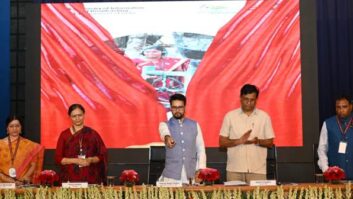The author is membership program director of the National Federation of Community Broadcasters. NFCB commentaries are featured regularly at www.radioworld.com.
The last few weeks have prompted rallying cries to defend journalism. It is a laudable goal. How does community radio state its case for community-based journalism strongest?
Numerous media organizations have joined together to call attention to the issue of freedom of the press. Public feuds with various politicians are ostensibly at the root of this drive, though it is always a good time to reflect on this essential right handed down by the Founding Fathers of this nation. On social media, messages tagged with #FreePress have highlighted the importance of journalism to democracy.
[Read: Community Broadcaster — Observing National Radio Day 2018]
Speaking up, though, only matters when listening complements it. Current’s Julie Drizin opined on the matter, “It seems that in this harsh and divisive climate, public media is the last broadcaster standing by the imperative to bring people of diverse perspectives together to talk and to listen. This is a pro-democracy peacekeeping mission of sorts.” She’s right. Advertising, and the pressure for ratings, drives many commercial media outlets; and thus there is almost a built-in inclination toward tabloid headlines as well as journalism that preys on people’s fury and worst fears.
Yet while constant coverage of scandals may shore up audience temporarily, it’s not a terribly good long-term strategy. The news cycle is already filled constantly with analysis of the clash of the moment. As news fatigue sets in (and it already has, according to Pew Research), people tune out. Television and a host of outlets, save radio, saw declines in audience in 2017. That so much of noncommercial media is radio can’t go unnoticed.
Of course, noncommercial media is not immune from dramas — I’ll get to that later — but it is better positioned to offer more context. America needs so much more conversation and listening right now, and noncommercial media such as community radio has a place at the table.
Given all the attention on freedom of the press, next steps can be perplexing.
One place to start comes courtesy of two of my favorite minds in media. For Poynter this week, Melody Kramer and Betsy O’Donovan, suggest actionable items for media organizations wanting to take the #FreePress campaign forward. Demonstrating relevance, focusing on service and setting goals are among the key areas you may find most valuable.
In the case of community media, I encourage you to take to heart what Kramer and O’Donovan have to say. I’d also recommend community radio in particular assesses its steps with an eye on what serves communities best.
Community radio like yours may sometimes concentrate on what we do not have. We don’t have all the money we need to do a major initiative. We don’t have the expertise to do this project or that project. But what we have is what a lot of bigger organizations would kill for: trust and community relationships that give us access in a different way and permits us to tell a richer story. On this sort of foundation is where important journalism come from.
Certainly, there is no shortage of community media doing unique, courageous work. Whether it is a station like WXPR in Wisconsin serving its varied neighbors with news programming on its rural region, and the trends impacting it, or California’s KWMR safeguarding its small community with critical conversations amid wildfires, community radio is a lifeline in many areas. And even in larger cities like Minneapolis, Portland and Washington, stations are finding ways to make a locally centered splash in our media intensive world. May their efforts inspire your station to do more ambitious work.
A reality is that community media is oftentimes on the frontlines of this debate over the press and has an important role to play. It is crucial, amid the expansion of news deserts, that stations double down on local, neighborhood-oriented programming and journalism. Not only do audiences say they want more local coverage, but it is the essence of our educational mission.
All good things, but a reminder: now is not a time for community media to be too self-satisfied with such wonderful missions, engagement and trust. We have an enduring obligation to try harder to cover our communities. I respectfully submit that, perhaps, the most challenging work is not broadcasting someone with an opinion about the White House, but going into communities in your signal area, talking with people you do not know or whose language you may not speak, to tell their stories.
Clearly, in the mix of our 168-hour week, your programming need not be an either/or proposition. Consider auditing your schedule one week, however, and see how you’re doing as far as coverage goes of underreported communities.
The #FreePress movement is a marvelous moment to educate audiences about the legacy of journalism in making a better country. Community radio can make this case best by continuing to do bold, gutsy storytelling from where you live.










